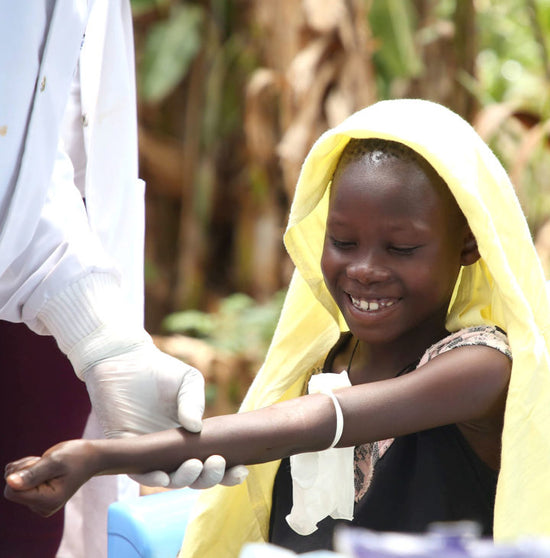-
Leishmaniose VH BIO
Vendor:Bioclin / Quibasa Química Básica LtdaRegular price $0.00Regular priceUnit price per
FAQ
What is leishmaniasis?
Leishmaniasis is caused by a protozoan parasite from over 20 Leishmania species. Over 90 sand fly species are known to transmit Leishmania parasites. There are three main forms of the disease:
Visceral leishmaniasis: Fatal if left untreated, it is characterized by irregular bouts of fever, weight loss, enlargement of the spleen and liver and anaemia.
Cutaneous leishmaniasis: The most common form, causes skin lesions, mainly ulcers, on exposed parts of the body, leaving life-long scars on the skin and resulting in serious disability or stigma.
Mucocutaneous leishmaniasis: Leads to the partial or total destruction of the mucous membranes of the nose, mouth and throat.
The disease affects some of the world’s poorest people and is associated with malnutrition, population displacement, poor housing, a weak immune system and lack of financial resources.
An estimated 700 000 to 1 million new cases occur annually.
(WHO Leishmaniasis key facts)
How is leishmaniasis diagnosed?
Leishmaniasis is caused by a protozoa parasite from over 20 Leishmania species. Over 90 sandfly species are known to transmit Leishmania parasites.
In visceral leishmaniasis, diagnosis is made by combining clinical signs with parasitological, or serological tests (such as rapid diagnostic tests). In cutaneous and mucocutaneous leishmaniasis serological tests have some value and clinical manifestation with parasitological tests confirms the diagnosis.
(WHO, Leishmaniasis Key Facts)
Where can leishmaniasis be found?
Most cases of visceral leishmaniasis occur in Brazil, East Africa and in India, with an estimated 50 000 –90 000 new cases worldwide annually; only 25–45% of cases are reported to WHO. Visceral leishmaniasis remains one of the leading parasitic diseases with outbreak and mortality potential. In 2020, more than 90% of new cases were reported to WHO from 10 countries: Brazil, China, Ethiopia, Eritrea, India, Kenya, Somalia, South Sudan, Sudan and Yemen.
About 95% of cases of cutaneous leishmaniasis occur in the Americas, the Mediterranean basin, the Middle East and central Asia. It is estimated that 600 000 to 1 million new cases occur worldwide annually, but only around 200 000 are reported to WHO.
Over 90% of mucocutaneous leishmaniasis cases occur in Bolivia (Plurinational State of), Brazil, Ethiopia and Peru.
(WHO 2023)
What are the main risk factors for leishmaniasis?
Socioeconomic conditions
Poverty increases the risk for leishmaniasis. Poor housing and domestic sanitary conditions (lack of waste management or open sewerage) may increase sandfly breeding and resting sites, as well as their access to humans. Sandflies are attracted to crowded housing because it is easier to bite people and feed on their blood. Human behaviour, such as sleeping outside or on the ground, may increase risk.
Malnutrition
Diets lacking protein-energy, iron, vitamin A and zinc increase the risk that an infection will progress to a full-blown disease.
Population mobility
Epidemics of leishmaniasis often occur when many people who are not immune move into areas where the transmission is high.
Environmental and climate changes
The incidence of leishmaniasis can be affected by changes in urbanization, deforestation or the human incursion into forested areas.
Climate change is affecting the spread of leishmaniasis though changes in temperature and rainfall, which affect the size and geographic distribution of sandfly populations. Drought, famine and flood also cause migration of people into areas where the transmission of the parasite is high.
HIV-coinfection
People living with HIV and who are infected with leishmaniasishave high chances of developing the full-blown disease, high relapse and mortality rates. Antiretroviral treatment reduces the development of the disease, delays relapses and increases the survival. As of 2021,Leishmania-HIV coinfection has been reported from 45 countries. High coinfection rates are reported from Brazil, Ethiopia and the state of Bihar ( India).
(WHO 2023)
Useful links
-

Neglected tropical diseases programme at FIND
Read moreWe are working to accelerate elimination of neglected tropical diseases through tailored testing strategies.
-

Neglected tropical diseases test directory
Read moreWe are working on a searchable directory to include diagnostic tests neglected tropical diseases.
-

Global leishmaniasis surveillance
Read moreIn 2021, 221.953 new cutaneous leishmaniasis cases (221.614 autochthonous and 339 imported) and 11.743 new VL cases (11.689 autochthonous and 54 imported) were reported to WHO.




